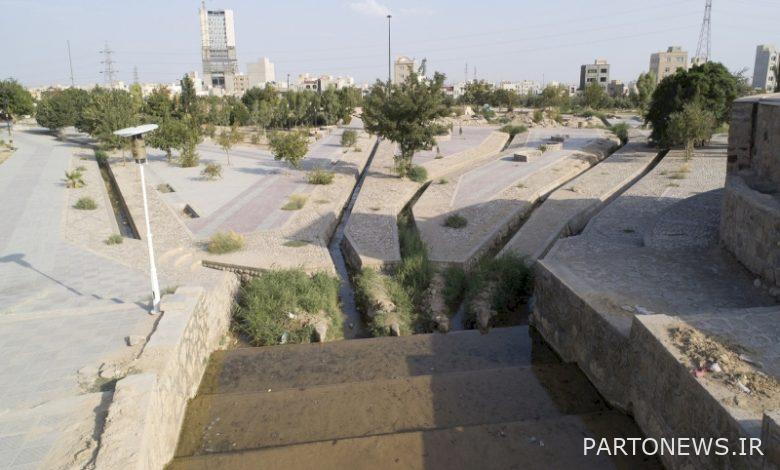The traditional water division system of Semnan is more than a thousand years old

There is no permanent river in the city other than the one where water and distribution are the main subject of this section. .
The water of Semnan, which we will enter into the main subject of its division, originates from a place 18 km north of this city, under the Shahmirzad mountains, towards Darzin and Cheheltan, and by joining the series of aqueducts and springs of Darzin, forms the Rud Rudbar river. It flows towards the city of Semnan and its farms.
Semnan irrigation system is pool method and based on the schedule of water withdrawal for each person and has a special system. The method of dividing water in Semnan is older than methods such as dividing the water of Zayandehrood in Isfahan, which was considered by Sheikh Baha’i. The method of dividing the water of Semnan is attributed to Sheikh Ala Al-Dawlah of Semnan (657-736 AH).
Semnan water, after passing about two kilometers from the last farm along the river, reaches a place called “Para” water dispenser. Para was the central headquarters for water distribution in Semnan’s six pools. An important part of customary laws and regulations governing the division of Semnan water from the point of para. In this system, water is divided into three stages, which include dividing the water of Gol Rudbar river between Darzin village and Semnan city, water distribution in Para place, whose water reaches five parts and six pools of the city.
Gol Rudbar river, after passing through Darzin city in the north of Semnan city, reaches the water dispenser. In this place, water passes through six towers (in Semnani language of Burjam) which are arranged in a stepped manner to be flat and uniform. The water at the site of the sixth or large tower, while being completely flat and of uniform thickness due to passing over the towers, is divided into five unequal parts in proportion to the share of each pool and And “Shahjoui”, “Nasar” and “Esfanjan” and “Choob Masjed” creeks, “Kadivar” creek, “Kushmoghan” creek and “Zawqan” creek flow towards six pools. At the site overlooking these towers, a guard room has been built in which the “paraban” is stationed and oversees the flow of water. Paraban is elected with the participation and based on the public trust. In the traditional irrigation system of Semnan, six water storage pools were foreseen in different neighborhoods of the city. Zawqan pool, Kushmoghan pool, Bagh Feyz pool for Nasar and Esfanjan neighborhoods, Letibar pool and Shahjoo pool.
The first four pools are in their former location, only the Latibar pool was destroyed during the construction of Manouchehri Square and moved to the stone park. The physical shape of these five pools has also been changed and rebuilt with cement and stone, and the entry and exit of water is controlled by mechanical equipment. Of course, the management and the water system are still in place according to the old system.
In the division of water, natural and legal persons were involved and each had a duty. “Abbar” is the owner of the water to whom the official ownership of water is transferred through inheritance or purchase or lease.
“Amin” is one of the owners of water over the river and according to the rules, opens or closes the water that flows to Semnan.
“Paraban” (in Semnani: Parabon) A person who is in a water dispenser in a special room and supervises the protection and protection of water.
The “legislator” is the qualified person who records the water-related calculations of the people’s share and changes in water ownership.
An “author” is a person who is in charge of all the water calculations of persons in a pool and, based on the list and the amount communicated to him by the legislator, determines the water of each person’s share at a certain time.
The “marehdar” (mareban) is the link between the scribe and the sculptor. he does.
“Istakhraban” (in Semnani: Staleh Bon) is also a person with whom the management of the pool in the entry and exit of water, opening and closing and taking care of not wasting water and the general affairs of the pool.
“Employee” (water divider) The person or persons who divide from the pool to the fields into smaller streams.
Farmers or water owners go to their respective pools every day according to the water circulation circuit and take their rations or water from the pool water according to the “mare”.
“Marah” is a form in which the writer writes the names and amount of water in it every day and gives it to the mortgagor.
The traditional water division system of Semnan city has been registered in the list of national monuments of Iran in 1390. Before that, the Semnan water distribution complex “Burjum Kabir” and the six streams of this region have been nationally registered. For the past year and a half, many efforts and follow-ups have begun for the global registration of this traditional water distribution system in Semnan, and its documents are being collected and its studies are being carried out.
* Report from Mohammad Amouzadeh, a researcher of popular culture in Semnan province
.

